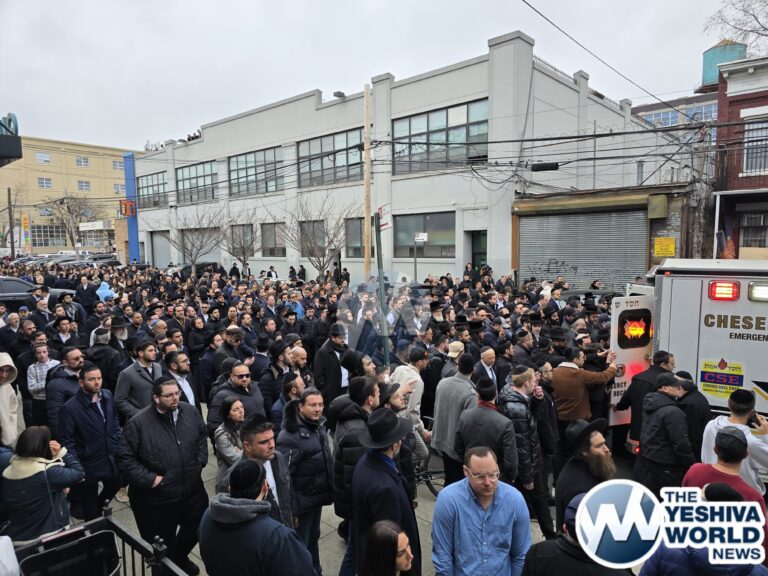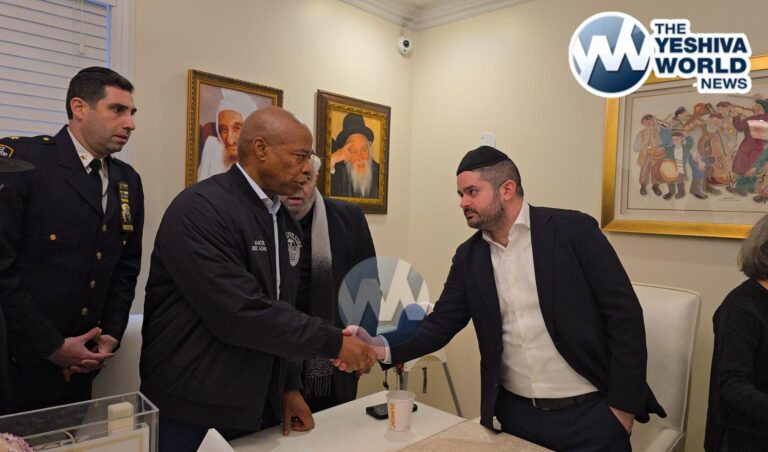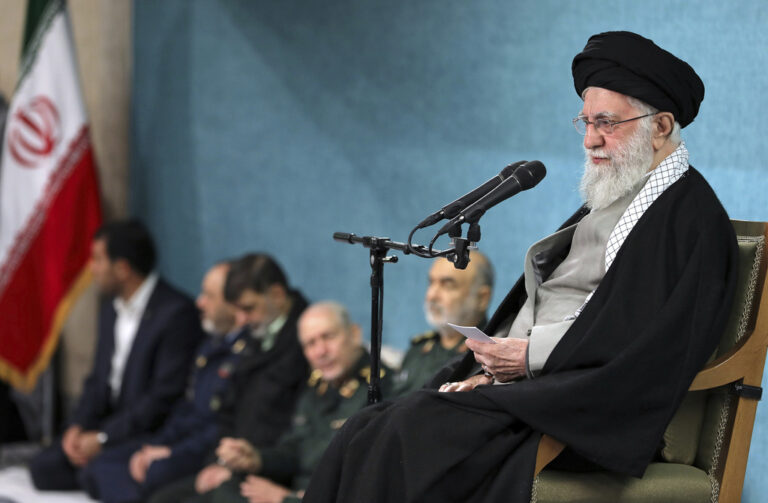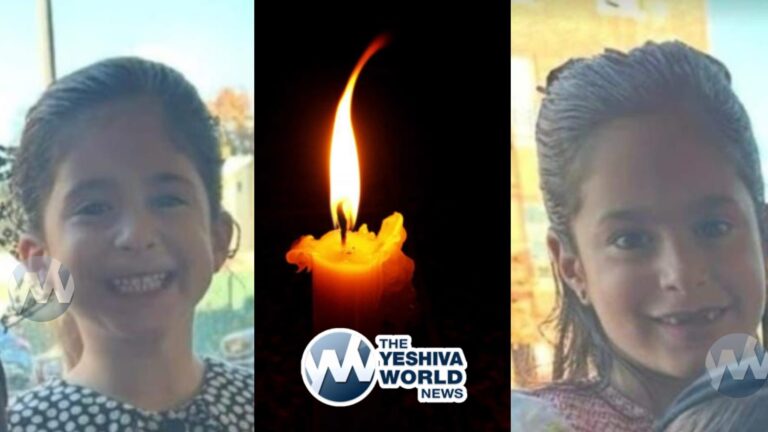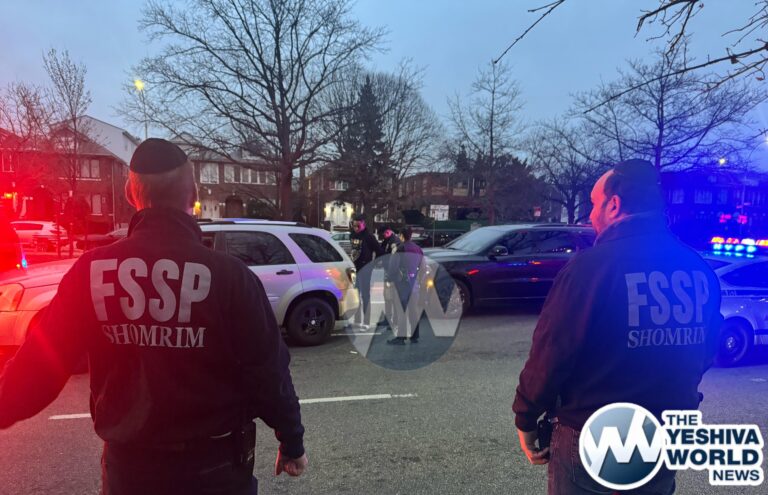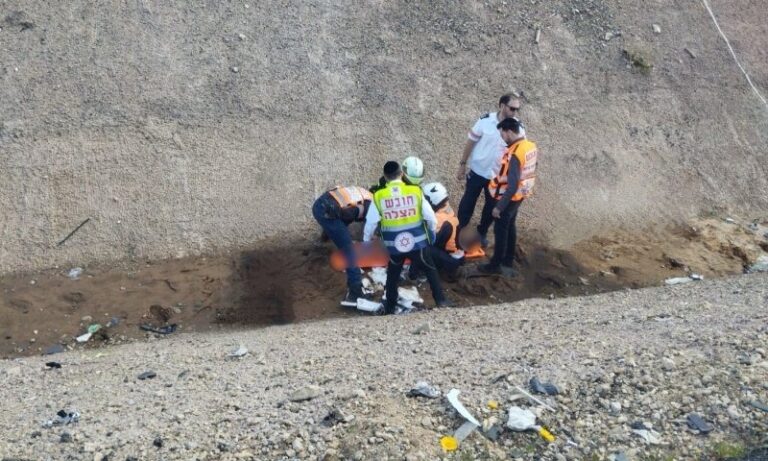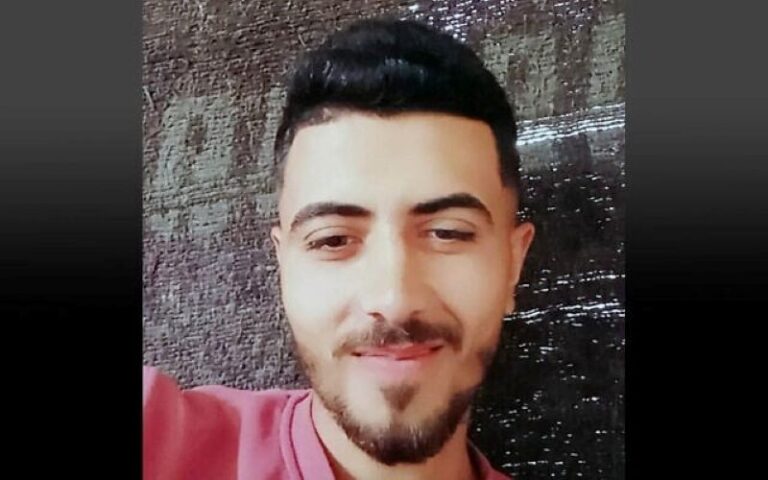 The Yom Tov of Chanukah celebrates the eternal triumph of Torah Shebe’al Peh. The tiny, radiant flames illuminating the dark, winter nights represent the miraculous progression of the Mesoras Hatorah from generation to generation, throughout Klal Yisroel’s successive exiles.
The Yom Tov of Chanukah celebrates the eternal triumph of Torah Shebe’al Peh. The tiny, radiant flames illuminating the dark, winter nights represent the miraculous progression of the Mesoras Hatorah from generation to generation, throughout Klal Yisroel’s successive exiles.
There have been numerous times throughout history, when the Ohr Hatorah has been reduced to no more than a few flickering flames in a world of overwhelming darkness. Yet each time, those flames miraculously persevered by the hand of Hashgocha for the purpose of rekindling a vibrant renaissance – restoring the roaring Aish Hatorah to its full glory on the next leg of Klal Yisroel’s odyssey of golus.
[CLICK ON ALL IMAGES TO ENLARGE]
The legendary Telzer Rosh Yeshiva, Rav Chaim Stein, would often reflect on the supernatural rebirth of Torah following the churban, using the nes Chanukah as a metaphor. He would relate the well-known kashya of the Bais Yosef. Why do we celebrate eight days of Chanukah if the miracle of the oil lasted only for seven? The chashmonaim had enough pure oil for the first day. Rav Chaim would answer with a teirutz from his father-in-law, Rav Chaim Aryeh Leib Zaks, the rov of Uzda. (This answer was later found in the newly published Me’iri). “The extra day,” he would say, “commemorates the very survival of the oil, which in itself was a miracle worthy of a Yom Tov.
“This is the way we must look at the revival of the Yeshivos today,” Rav Chaim would say. In the context of the miraculous resurgence of Limud Hatorah in the post-churban generations, we often overlook the equally miraculous survival of the vital Mosrei Hatorah that were the catalysts for this renaissance. “When we think into it,” said Rav Chaim, “these burning embers plucked from the raging inferno are a far greater miracle. They represent the miracle of Vegam netzach Yisroel lo yeshaker – the eternal destiny of Klal Yisroel and the Torah, despite all odds.
Obviously, Rav Chaim never referred to himself specifically in this context. But the handwritten pages of the personal diaries that he wrote over the course of the great churban, tell a story not just of supernatural survival, but also of a supernatural existence. Rav Chaim’s copious, dated entries vividly portray a day-to-day subsistence that appears beyond the realm of nature.
Miraculous Survival
 There’s a famous incident, where Rav Chaim and his chaburah were on an escape route to Siberia, traversing the expansive Russian wasteland by train. Among this group of 18 bochurim were Rav Meir Zelig Mann and others from the Telshe Yeshiva. The train ride would last many days and the group was determined to figure out a way to perform the mitzvah of ner Chanukah. Some spare threads from their shirts would make for fine wicks and an old discarded can would serve as a perfect menorah. But what about oil? Where would they ever find oil in this forsaken place? At the next station, one of the bochurim crawled underneath the carriage. As he suspected, the train’s wheel assembly was laden with a coating of crude, black grease. They had struck gold!
There’s a famous incident, where Rav Chaim and his chaburah were on an escape route to Siberia, traversing the expansive Russian wasteland by train. Among this group of 18 bochurim were Rav Meir Zelig Mann and others from the Telshe Yeshiva. The train ride would last many days and the group was determined to figure out a way to perform the mitzvah of ner Chanukah. Some spare threads from their shirts would make for fine wicks and an old discarded can would serve as a perfect menorah. But what about oil? Where would they ever find oil in this forsaken place? At the next station, one of the bochurim crawled underneath the carriage. As he suspected, the train’s wheel assembly was laden with a coating of crude, black grease. They had struck gold!
The bochurim immediately set a plan in motion. At each station, they would take turns getting off the train and gathering as much as they can of this precious black fuel. This worked well for the first four nights. The fourth day was Shabbos and they couldn’t gather any oil. By the time Motzei Shabbos came, a heavy snow was falling and the temperature outside plummeted to well below zero. It was physically impossible to go out in this weather. With the train deeply submerged in several feet of snow, there was no way to access the wheel area even if they tried.
Brokenhearted, they gave up on lighting neiros Chanukah that night and went to sleep dejected. Rav Chaim and his chavrusa, Rav Boruch Baron, simply would not surrender. If they could not perform the mitzvah in the physical sense, then they would at least experience the essence of neiros Chanukah through delving into the halachos, similar to the recital of the korbonos when there’s no Bais Hamikdash.
It was well past midnight, but the two chavrusas were oblivious to the passage of time. They were reveling in the world of the Mechaber, the Rema and the Rambam. Suddenly, out of the blue, a stocky Russian peasant appeared at the door of their train carriage, his large frame practically filling the doorway. “Do you by any chance need some candles?” he asked. Rav Chaim and his chavrusa Rav Boruch nearly fainted on the spot. Paying the peasant handsomely, they clutched the precious candles and quickly proceeded to wake up the rest of the group. With extraordinary fervor, they recited the brachos and lit the flames not long before the glow of the morning star began its ascent over the horizon.
 When talmidim would hear Rav Chaim recount this story, they would ask, “Was this Russian peasant perhaps Eliyahu Hanavi?” Rav Chaim would be visibly disturbed by this question. He would say, “Those who ask about Eliyahu Hanavi are missing the point of the story. If you look at it simply, as a moifes then there is no practical relevance here. The story is about the koach of teshukah. When a person develops a firm, resolute will – to perform a mitzvah, nothing in the world could stand in his way. When the Ribbono Shel Olam looks into our hearts and sees how genuinely distraught we are at our not being able to be mekayem a mitzvah – to the point az es geit uhn der leben mamesh – then the Ribbono Shel Olam provides us the means to carry out our teshukah. Whether it’s through Eliyahu Hanavi or a Russian boor really makes no difference.
When talmidim would hear Rav Chaim recount this story, they would ask, “Was this Russian peasant perhaps Eliyahu Hanavi?” Rav Chaim would be visibly disturbed by this question. He would say, “Those who ask about Eliyahu Hanavi are missing the point of the story. If you look at it simply, as a moifes then there is no practical relevance here. The story is about the koach of teshukah. When a person develops a firm, resolute will – to perform a mitzvah, nothing in the world could stand in his way. When the Ribbono Shel Olam looks into our hearts and sees how genuinely distraught we are at our not being able to be mekayem a mitzvah – to the point az es geit uhn der leben mamesh – then the Ribbono Shel Olam provides us the means to carry out our teshukah. Whether it’s through Eliyahu Hanavi or a Russian boor really makes no difference.
When one reads the handwritten entries of Rav’ Chaim’s four years worth of diaries, it becomes obvious that this perspective was not developed merely in hindsight. This was the way he and his distinguished chaverim perceived the world even at the height of the bleakest hester panim. The entries leading up to Rosh Chodesh Elul are filled with confidence that Hashem will somehow procure for them a proper Shofar. Rav Chaim describes how they are reviewing Hilchos Shofar carefully and readying themselves for the mitzvah. Just days before Rosh Hashanah, Rav Chaim expresses optimism that he will somehow yet procure a machzor in the Uzbek wilderness.
He writes of different strategies they are contemplating to get the evil administrators of the communist Kolkhoz (Russian version of a kibbutz settlement) to exempt them from their backbreaking labor over the Yamim Tovim. Amazingly, each and every one of these hopes comes about in the most unnatural fashion. An animal breeder inexplicably turns up with a ram’s head in his possession. In the nearby village, they chance upon an elderly yid who owns a machzor and graciously allows them to hand copy it. (Click HERE to see some of the Machzor)
Perhaps, more inspiring than the miracles is the unwavering commitment to the ideals of a true ben Yeshiva that were maintained throughout the extenuating circumstances. Both physically and figuratively, they were as far from the Koslei Bais Hamedrash as one could get. Chopping wood on a primitive Uzbekian kolkhoz is not the natural habitat for a Yeshiva bochur. Yet, Rav Chaim records with the greatest simcha that boruch Hashem their Yamim Noraim davening resembled the davening in Telshe, down to the minutest detail.
He writes extensively about the level of the hasmadah maintained by the group and the ambitious goals in ruchniyus that they set for themselves. He speaks of the exhaustion and starvation they would endure in order refrain from even the slightest leniencies in hilchos Shabbos or hilchos Kashrus.
 On one occasion, Rav Chaim records a hesped he delivered for a woman who was niftar in Samarkand. He writes that he quoted the words of Shlomo Hamelech, in Koheles, “Tov laleches el bais aivel mileches el bais mishteh” it’s better to go to a house of mourning than to a house of celebration. People think that in this ongoing gehinnom we don’t need a bais ha’avel to arouse us. With the malach hamaves continuously in front of our eyes, we are in a constant state of “Vehachai yitten el libo”. Nevertheless, the nature of a person is to make peace with his situation. “Even we,” said Rav Chaim, “have become somewhat complacent in our matzav. Let us utilize this opportunity to awaken ourselves to teshuvah.”
On one occasion, Rav Chaim records a hesped he delivered for a woman who was niftar in Samarkand. He writes that he quoted the words of Shlomo Hamelech, in Koheles, “Tov laleches el bais aivel mileches el bais mishteh” it’s better to go to a house of mourning than to a house of celebration. People think that in this ongoing gehinnom we don’t need a bais ha’avel to arouse us. With the malach hamaves continuously in front of our eyes, we are in a constant state of “Vehachai yitten el libo”. Nevertheless, the nature of a person is to make peace with his situation. “Even we,” said Rav Chaim, “have become somewhat complacent in our matzav. Let us utilize this opportunity to awaken ourselves to teshuvah.”
Each and every decision made by the group was based solely on Da’as Torah and the hashkafah of chazal. Political considerations never played a role in plotting their course of action. When faced with existential decisions that could spell the difference between life and death, they would open a chumash and look in the pesukim for guidance. They would turn to gemaros and medrashim for clues in dealing with situations.
Rav Chaim writes how a gentile neighbor began making generous overtures to the bochurim. Some of the group became excited when he offered them a job in his bee breeding business for handsome compensation. Rav Chaim said this man is evil through and through, and we know from chazal that no good can come forth from evil. The bochurim devised a clever way to distance themselves from the individual while avoiding a direct confrontation. In time, Rav Chaim’s prediction proved correct.
Spreading Torah on Three Continents
Rav Chaim’s multifaceted leadership qualities and his special koach of harbotzas Torah shone forth during this dark and dismal period. In the remote villages of Tashkent, Bukhara and Samarkand, he would come across Jews of all backgrounds and levels of observance. Yet, Rav Chaim somehow managed to get through to them and uplift them to become better yidden.
When Rav Chaim would speak of the transplanting of the Yeshivos from Europe to American shores, he would describe it as gevillin nisrofin ve’osios porchos – the old parchments of Telshe D’Lita and the other great Yeshivos were consumed, but their holy letters floated up into the air.
Rav Chaim served as a vehicle for these floating letters – which beheld the rich legacy of Telshe. They accompanied him all through his sojourns deep into the Far East. Ultimately, he re-transcribed these holy letters on the new parchments of Wickliffe Ohio, where he transmitted the majesty of Telshe for more than sixty years.
Rav Chaim’s warm, encompassing personality was the strongest dynamic in his harbotzas Torah. He exuded a tenderness and affection that transcended continents, generations, backgrounds and mindsets. He knew how to uplift you and transport you back to the Skudvil of his youth, the Kelm of his adolescence or the fifteen years his spent in Telshe D’Lita. He would inspire you by painting a beautiful picture of the Ahavas Hatorah that existed amongst the common folk in Lita.
In Rav Chaim’s hometown of Skudvil, if someone would finish Shas, the entire town would celebrate for a full week. Skudvil had a first-rate Talmud Torah. Rav Schach traveled as a young boy, from Vaboilnik to learn in the Talmud Torah of Skudvil. But yet, Rav Chaim’s father sent him to Kelm at the age of nine. He said, Chazal say Havei golah lemakom Torah. To achieve true growth in Torah, one must travel away from everything.
Rav Chaim remained in Kelm for just four years, until his Bar Mitzvah. Despite his young age, he would say that the fiery passion of Rav Elya Lopian penetrated every fiber of his being and remained with him for life. He considered Rav Elya Lopian to be his rebbe in hislahavus and in yiras shomayim.
Rav Chaim came to Telshe in 1925, as a young bar-mitzvah bochur. For ten years, he learned under the legendary Rav Chaim Telzer (Rabinowitz) whom he considered his rebbe muvhak. For five years, he learned bechavrusah with the Telzer Rav, Rav Avrohom Yitzchok Bloch hy”d. In recognition of Rav Chaim’s gadlus, the roshei yeshiva accorded him the unique honor of sitting on the mizrach while he was still a bochur.
Rav Chaim’s Harbotzas Torah in America spanned an era of over sixty years. For more than six decades, this golden link was a fixture in the Bais Medrash, where he transmitted his wellsprings of Geonus, Bekius, Mussar and the mehalach hachayim of a ben Torah to thousands of talmidim that were fifty, sixty, seventy and eighty years his junior. Molding and developing talmidim was his first and foremost objective.
 Rav Chaim would vividly portray for his young American talmidim the landscape of Telshe D’Lita, both the Yeshiva as well as the kehilla. Prior to the war, there were various nascent youth movements sprouting up all over Lita and the rest of Europe. Telshe unfortunately was not immune to this plague. Nevertheless, the Yeshiva remained the heart and soul of the city. It was the pride and joy of every member of the kehilla, regardless of their own level of learning.
Rav Chaim would vividly portray for his young American talmidim the landscape of Telshe D’Lita, both the Yeshiva as well as the kehilla. Prior to the war, there were various nascent youth movements sprouting up all over Lita and the rest of Europe. Telshe unfortunately was not immune to this plague. Nevertheless, the Yeshiva remained the heart and soul of the city. It was the pride and joy of every member of the kehilla, regardless of their own level of learning.
The awe and respect that was accorded to talmidei chachomim was unparalleled. This, Rav Chaim would say, is something that has not been replicated in the aftermath of the churban. His eyes would well with tears when he would reflect upon the unprecedented rebirth of the Olam Hatorah in America both in quality as well as quantity. But he felt the passionate love for Torah represented in the Litvishe balebos is still lacking in this country.
Uplifting Klal Yisroel
In addition to his capacity as Rosh Hayeshiva, Rav Chaim was blessed with an ability to connect with balebattim, both former talmidim of Telshe, as well as strangers from across the spectrum. With his inimitable sweetness, he would find creative ways of conveying his message in no uncertain terms, without ever coming across as condescending or intimidating.
A typical example of this was Rav Chaim’s address at the Eleventh Siyum Hashas where he connected with an audience of over 100,000 yidden from all walks of life in cities around the world. It is well known that from the time he was a bochur, Rav Chaim maintained a strict kabalah never to let a day go by without a minimum of one hour of limud haTorah. Stories abound from over the years, detailing how under the most extenuating circumstances, Rav Chaim would not compromise on his precious “hour” for anything in the world. The Siyum Hashas was a perfect venue to convey the primacy of this ideal to an audience of contemporary balebattim.
Rav Chaim began with the final words of Maseches Niddah, Tanna devei Eliyahu kol hashoneh halachos bechol yom… With effusive praise, Rav Chaim extolled the virtues of preoccupied balebattim, who faithfully adhere to a daily learning seder with considerable mesiras nefesh. The fact that this praise was coming from a fellow Daf Yomi participant since the third cycle began in 1938, generated an affinity and a kinship between the audience and the nonagenarian gadol.
Then, Rav Chaim looked up at the audience and began to speak passionately about the imperative of making this daily commitment an absolute obligation, despite all obstacles. He portrayed the importance of not letting a single day go by without Torah. “Ah tog un lernen is nit gelebt.” He underscored the fact that learning is referred to as esek Hatorah. An astute businessman must look at his learning as an esek – a lucrative venture, into which one invests his heart and soul.
A Gadol for the Masses
 Toward the end of his life, Rav Chaim revealed a new dynamic in his personality. When people would ask him how the Rosh Yeshiva was feeling, he would say, “Boruch Hanosen laya’ef koach. Indeed, he saw his advanced age as a generous blessing from Shomayim and a mission to utilize his years for the benefit of Klal Yisroel. One area in particular that gave him no rest was the challenges faced by those in shidduchim. He would spend hours being be mechazeik older singles and their parents. He would take their names and daven for them. On many occasions, he would give his havtacha for a besurah tova in the near future. These havtachos quickly became famous for their accuracy.
Toward the end of his life, Rav Chaim revealed a new dynamic in his personality. When people would ask him how the Rosh Yeshiva was feeling, he would say, “Boruch Hanosen laya’ef koach. Indeed, he saw his advanced age as a generous blessing from Shomayim and a mission to utilize his years for the benefit of Klal Yisroel. One area in particular that gave him no rest was the challenges faced by those in shidduchim. He would spend hours being be mechazeik older singles and their parents. He would take their names and daven for them. On many occasions, he would give his havtacha for a besurah tova in the near future. These havtachos quickly became famous for their accuracy.
As the word spread, people from all over began streaming to his door. Cholim with serious illnesses from around the world, who were being treated at the nearby Cleveland Clinic, would make it a point to travel to Wickliffe for a brocha from Rav Chaim. A Toldos Avrohom Yitzchok chossid from Yerushalayim once came to Rav Chaim with his child, who was suffering from a serious heart defect. As they sat around the Rosh Yeshiva’s table, the rebbetzin brought out some drinks and refreshments, while the Rosh Yeshiva offered his heartfelt brachos and divrei chizuk. Rav Chaim took a sip from his glass. The chossid politely requested that the Rosh Yeshiva allow him and his son to partake from the shirayim left over in Rav Chaim’s glass. With a broad smile, Rav Chaim graciously acquiesced. He knew how much this meant to this poor, suffering father.
Rav Chaim would say that the unprecedented kibbutz galuyos that exists in America today is an overly positive phenomenon. He would note how all of the unique groups in Klal Yisroel ultimately enhance each other by contributing their individual qualities. He said that until he came to America, he never experienced the uplifting nature of eating Shalosh Se’udos as a group. “The concept of eating together with dibbuk chaverim is something we’ve acquired from the chassidim,” he would say.
Rav Chaim had a keen understanding of how to reach the heart of all types of yidden, regardless of their background. He was fond of relating an innovative teitch from the saintly Belzer Rav zt”l, on the words of the possuk, “S’mach Zevulun betzeisecha v’yissochor be’ohalecha.” When can Zevulun rejoice in his financial success; when he himself is a Yissochor in his own tent.
When people would ask for segulos, he would say that the only protection in the world is Torah and chesed. “We are currently in the era of ikvesa dimeshicha,” he would say. The gemara says; what should a person do to protect themselves from the suffering of Chevlei Moshiach. Ya’asok BeTorah ugemilus chasodim. The only way to protect our families and our children from the pervasive influences of the street is through learning Torah and performing chesed. The only defense against the unbearable tragedies of our time is to acquire these powerful zechusim.
Rav Chaim is no longer with us, but his legacy lives on. The aura of his hashpa’ah still permeates the Koslei Bais Hamedrash in Wickliffe that was so dear to his heart. His novel chiddushei Torah and Shiurei Da’as and his legendary Cheshkas Hatorah are being passed on by his thousands of talmidim amongst them many prominent marbitzei Torah and mechanchim. And the inspiration exuded by his holy countenance lives on in the hearts of the countless individuals whose lives he touched.
(Article written by Nachum Dellman and appears in this weeks Yated Ne’eman)


